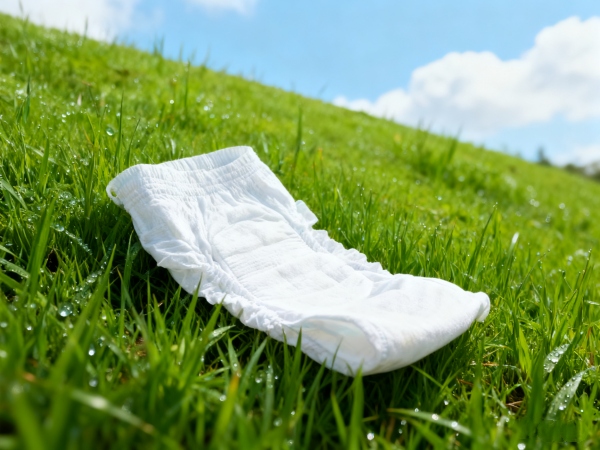Adult diapers play an important role in maintaining comfort, dignity, and hygiene for people managing incontinence or mobility issues. However, once these products are used, they must be handled and disposed of properly. Many users and caregivers overlook this process, but it’s essential for ensuring both sanitary and environmental safety. Improper disposal can lead to unpleasant odors, the spread of bacteria, and unnecessary waste in landfills. By following the right methods, you can protect your health, your surroundings, and even contribute to sustainable waste management.
Why Proper Disposal of Adult Diapers Matters

The importance of proper adult diaper disposal goes far beyond cleanliness. Used diapers contain human waste, moisture, and bacteria that can cause odor, attract insects, and contaminate surfaces if left unattended. In households, unsanitary disposal often leads to unpleasant smells that spread quickly, especially in warm or humid climates. In healthcare environments, improper disposal can result in cross-contamination and increase the risk of infection among patients and caregivers.
From an environmental perspective, adult diapers present a growing waste challenge. Most are made from non-biodegradable materials such as polyethylene, polypropylene, and superabsorbent polymers. These components are designed to lock in moisture but make decomposition nearly impossible in landfills. As a result, millions of used diapers contribute to long-term solid waste problems every year. Proper disposal—through sealing, containing, and using appropriate waste streams—helps minimize these issues and supports public hygiene standards.
Furthermore, correct handling reflects respect for both the user and others in the shared environment. It ensures dignity for those using adult diapers and shows consideration for sanitation workers who must handle waste materials safely.
Step-by-Step Guide to Dispose Adult Diapers Hygienically
Disposing of adult diapers hygienically is not complicated, but it requires consistency and care. Follow these detailed steps to maintain cleanliness and minimize health risks:
Remove and roll the diaper securely.
After use, fold the soiled area inward and roll the diaper tightly to trap any waste inside. This minimizes leakage and reduces odor exposure. For extra hygiene, use the diaper’s adhesive tabs to keep it rolled up firmly.
Seal it in a dedicated disposal bag.
Place the rolled diaper in a small plastic or diaper disposal bag. It’s best to use scented or biodegradable diaper bags, which both control odor and reduce environmental harm. Tie the bag tightly before throwing it away.
Use a covered, lined trash bin.
Dispose of the sealed bag in a general waste bin—never in recycling bins. Choose a bin with a tight-fitting lid to contain odor and bacteria. If you care for multiple users, consider labeling and separating diaper waste for hygienic management.
Empty the bin daily.
Leaving used diapers for long periods allows odor and germs to accumulate. Dispose of household diaper waste daily, especially during warm weather or in shared living spaces.
Clean and disinfect the area.
Regularly wash your hands with soap and warm water after every diaper change. For caregivers, wearing disposable gloves is highly recommended. Also, clean and sanitize the disposal area or bin at least once a week with a mild disinfectant.
Store and transport waste carefully.
If you must transport used diapers (for example, during travel or hospital shifts), carry them in double-sealed disposal bags to avoid leaks or smells. Keep them away from food and personal items.
By incorporating these habits, users and caregivers can maintain a fresh, safe, and hygienic environment at all times.
How to Handle Odor and Bacteria
Odor and bacteria are two of the biggest concerns when dealing with used adult diapers. Bacteria from human waste multiply rapidly, producing unpleasant smells and potential health risks if not managed correctly.
To combat this:
- Use odor-control bins and bags. Specialized diaper disposal bins feature air-tight lids and odor-locking mechanisms that trap smells. Pair them with deodorizing or carbon filter inserts for maximum effectiveness.
- Apply odor neutralizers. Place baking soda, activated charcoal packets, or commercial deodorizing discs at the bottom of your diaper bin to absorb odor-causing gases naturally.
- Maintain proper ventilation. Good air circulation reduces trapped odors and prevents bacterial buildup. Open windows or use an air purifier near the disposal area.
- Regularly disinfect the waste area. Clean bins and surrounding surfaces weekly with an antibacterial cleaner or diluted bleach solution to eliminate bacteria and maintain freshness.
- Change diapers promptly. The longer a used diaper is worn or left exposed, the more odor and bacteria develop. Prompt changes reduce both hygiene risks and smell.
By combining odor-control strategies with regular cleaning routines, you ensure a cleaner, safer, and more comfortable environment for everyone involved.
Can Adult Diapers Be Recycled?
One of the most common questions about adult diaper disposal is whether these products can be recycled. Unfortunately, in most regions, the answer is no. Traditional recycling systems cannot process used hygiene products because they contain a mix of non-recyclable materials (plastic, absorbent polymers, adhesives) and biological waste. The combination makes separation and sanitation extremely difficult.
However, the industry is evolving. Some waste management companies and sustainability initiatives are developing specialized recycling technologies that sanitize and repurpose used diapers. These processes can separate plastic components for reuse and convert organic material into energy or compost. Although these programs are still limited to certain regions (such as parts of Europe and Japan), they show promising progress toward circular waste solutions.
Until such technologies become mainstream, the best approach is responsible disposal—using biodegradable bags, avoiding littering, and supporting brands that use eco-friendly materials in their diaper products. Consumers can also check with local waste authorities to see if special collection programs exist in their area.


